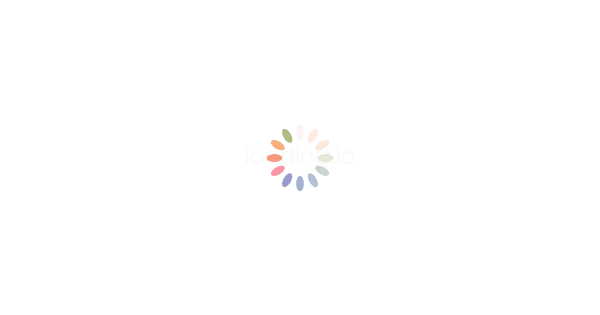Regulatory Updates
Revision of the Standards and Specifications for Foods and Food Additives under the Food Sanitation Act (Revision of Agricultural Chemical Residue Standards).

Distribution date: 03 February 2015 | Final date for Comment: 04 April 2015
Proposed maximum residue limits (MRLs) for the following agricultural chemical: Veterinary drug/Feed additive - Lasalocid
Products Covered: - Meat and edible meat offal (HS Codes: 02.01, 02.02, 02.03, 02.04, 02.05, 02.06, 02.07, 02.08 and 02.09) - Fish and crustaceans, molluscs and other aquatic invertebrates (HS Codes: 03.02, 03.03, 03.04, 03.06 and 03.07) - Dairy produce, birds' eggs and natural honey (HS Codes: 04.01, 04.07 and 04.08) - Products of animal origin (HS Code: 05.04) - Animal or vegetable fats and oils (HS Codes: 15.01, 15.02 and 15.06)
Regulation Type: Regular notification
Draft Regulation on private pest control services

Distribution date: 02 February 2015 | Final date for Comment: 02 March 2015
This draft Regulation, notified on 5 December 2014 in document G/SPS/N/DOM/59, seeks to establish the technical, logistical and sanitary requirements to be met by the operators, establishments and staff engaged in the provision of private pest control services, including phytosanitary treatment application services and structural pest control services. Text available at: http://members.wto.org/crnattachments/2015/SPS/DOM/15_0586_00_s.pdf.
Products Covered:
Regulation Type: Addendum to Regular Notification
Draft Regulation on private pest control services

Distribution date: 02 February 2015 | Final date for Comment: 02 March 2015
This draft Regulation, notified on 5 December 2014 in document G/SPS/N/DOM/59, seeks to establish the technical, logistical and sanitary requirements to be met by the operators, establishments and staff engaged in the provision of private pest control services, including phytosanitary treatment application services and structural pest control services. Text available at: http://members.wto.org/crnattachments/2015/SPS/DOM/15_0586_00_s.pdf.
Products Covered:
Regulation Type: Addendum to Regular Notification
Revision of the Standards and Specifications for Foods and Food Additives under the Food Sanitation Act (Revision of Agricultural Chemical Residue Standards)

Distribution date: 02 February 2015 | Final date for Comment: 03 April 2015
Proposed maximum residue limits (MRLs) for the following agricultural chemical: Pesticide - Chlorantraniliprole
Products Covered: - Meat and edible meat offal (HS Codes: 02.01, 02.02, 02.03, 02.04, 02.05, 02.06, 02.07, 02.08 and 02.09) - Fish and crustaceans, molluscs and other aquatic invertebrates (HS Codes: 03.02, 03.03 and 03.04) - Dairy produce, birds' eggs and natural honey (HS Codes: 04.01, 04.07 and 04.08) - Products of animal origin (HS Codes: 05.04) - Edible vegetables and certain roots and tubers (HS Codes: 07.01, 07.02, 07.03, 07.04, 07.05, 07.06, 07.07, 07.08, 07.09, 07.10, 07.13 and 07.14) - Edible fruits and nuts, peel of citrus/melons (HS Codes: 08.01, 08.02, 08.03, 08.04, 08.05, 08.06, 08.07, 08.08, 08.09, 08.10, 08.11 and 08.14) - Coffee, tea, mate and spices (HS Codes: 09.01, 09.02, 09.03, 09.04, 09.05, 09.06, 09.07, 09.08, 09.09 and 09.10) - Cereals (HS Codes: 10.01, 10.02, 10.03, 10.04, 10.05, 10.06, 10.07 and 10.08) - Oleaginous fruits, miscellaneous grains, seeds and fruits (HS Codes: 12.01, 12.02, 12.04, 12.05, 12.06, 12.07, 12.10 and 12.12) - Animal or vegetable fats and oils (HS Codes: 15.01, 15.02 and 15.06) - Cacao and cacao preparations (HS Codes: 18.01)
Regulation Type: Regular notification
Revision of the Standards and Specifications for Foods and Food Additives under the Food Sanitation Act (Revision of Agricultural Chemical Residue Standards)

Distribution date: 02 February 2015 | Final date for Comment: 03 April 2015
Proposed maximum residue limits (MRLs) for the following agricultural chemical: Pesticide - Chlorantraniliprole
Products Covered: - Meat and edible meat offal (HS Codes: 02.01, 02.02, 02.03, 02.04, 02.05, 02.06, 02.07, 02.08 and 02.09) - Fish and crustaceans, molluscs and other aquatic invertebrates (HS Codes: 03.02, 03.03 and 03.04) - Dairy produce, birds' eggs and natural honey (HS Codes: 04.01, 04.07 and 04.08) - Products of animal origin (HS Codes: 05.04) - Edible vegetables and certain roots and tubers (HS Codes: 07.01, 07.02, 07.03, 07.04, 07.05, 07.06, 07.07, 07.08, 07.09, 07.10, 07.13 and 07.14) - Edible fruits and nuts, peel of citrus/melons (HS Codes: 08.01, 08.02, 08.03, 08.04, 08.05, 08.06, 08.07, 08.08, 08.09, 08.10, 08.11 and 08.14) - Coffee, tea, mate and spices (HS Codes: 09.01, 09.02, 09.03, 09.04, 09.05, 09.06, 09.07, 09.08, 09.09 and 09.10) - Cereals (HS Codes: 10.01, 10.02, 10.03, 10.04, 10.05, 10.06, 10.07 and 10.08) - Oleaginous fruits, miscellaneous grains, seeds and fruits (HS Codes: 12.01, 12.02, 12.04, 12.05, 12.06, 12.07, 12.10 and 12.12) - Animal or vegetable fats and oils (HS Codes: 15.01, 15.02 and 15.06) - Cacao and cacao preparations (HS Codes: 18.01)
Regulation Type: Regular notification
Revision of the Standards and Specifications for Foods and Food Additives under the Food Sanitation Act (Revision of Agricultural Chemical Residue Standards)

Distribution date: 02 February 2015 | Final date for Comment: 03 April 2015
Proposed maximum residue limits (MRLs) for the following agricultural chemical: Pesticide - Clothianidin
Products Covered: - Meat and edible meat offal (HS Codes: 02.01, 02.02, 02.03, 02.04, 02.05, 02.06, 02.07, 02.08 and 02.09) - Dairy produce, birds' eggs and natural honey (HS Codes: 04.01, 04.07 and 04.08) - Products of animal origin (HS Codes: 05.04) - Edible vegetables and certain roots and tubers (HS Codes: 07.01, 07.02, 07.03, 07.04, 07.05, 07.06, 07.07, 07.08, 07.09, 07.10, 07.13 and 07.14) - Edible fruits and nuts, peel of citrus/melons (HS Codes: 08.01, 08.02, 08.03, 08.04, 08.05, 08.06, 08.07, 08.08, 08.09, 08.10, 08.11 and 08.14) - Coffee, tea, mate and spices (HS Codes: 09.01, 09.02, 09.03, 09.04, 09.05, 09.06, 09.07, 09.08, 09.09 and 09.10) - Cereals (HS Codes: 10.01, 10.02, 10.03, 10.04, 10.05, 10.06, 10.07 and 10.08) - Oleaginous fruits, miscellaneous grains, seeds and fruits (HS Codes: 12.01, 12.02, 12.04, 12.05, 12.06, 12.07, 12.10 and 12.12) - Animal or vegetable fats and oils (HS Codes: 15.01, 15.02 and 15.06) - Cacao and cacao preparations (HS Codes: 18.01)
Regulation Type: Regular notification
Revision of the Standards and Specifications for Foods and Food Additives under the Food Sanitation Act (Revision of Agricultural Chemical Residue Standards)

Distribution date: 02 February 2015 | Final date for Comment: 03 April 2015
Proposed maximum residue limits (MRLs) for the following agricultural chemical: Pesticide - Clothianidin
Products Covered: - Meat and edible meat offal (HS Codes: 02.01, 02.02, 02.03, 02.04, 02.05, 02.06, 02.07, 02.08 and 02.09) - Dairy produce, birds' eggs and natural honey (HS Codes: 04.01, 04.07 and 04.08) - Products of animal origin (HS Codes: 05.04) - Edible vegetables and certain roots and tubers (HS Codes: 07.01, 07.02, 07.03, 07.04, 07.05, 07.06, 07.07, 07.08, 07.09, 07.10, 07.13 and 07.14) - Edible fruits and nuts, peel of citrus/melons (HS Codes: 08.01, 08.02, 08.03, 08.04, 08.05, 08.06, 08.07, 08.08, 08.09, 08.10, 08.11 and 08.14) - Coffee, tea, mate and spices (HS Codes: 09.01, 09.02, 09.03, 09.04, 09.05, 09.06, 09.07, 09.08, 09.09 and 09.10) - Cereals (HS Codes: 10.01, 10.02, 10.03, 10.04, 10.05, 10.06, 10.07 and 10.08) - Oleaginous fruits, miscellaneous grains, seeds and fruits (HS Codes: 12.01, 12.02, 12.04, 12.05, 12.06, 12.07, 12.10 and 12.12) - Animal or vegetable fats and oils (HS Codes: 15.01, 15.02 and 15.06) - Cacao and cacao preparations (HS Codes: 18.01)
Regulation Type: Regular notification
RTS 67.06.01:13, Fortificación de alimentos. Especificaciones. (Azúcar, sal, harina de maíz nixtamalizado y pastas alimenticias) (Salvadorian Technical Standard (RTS) No. 67.06.01:13: Food fortification. Specifications (Sugar, salt, nixtamalized maize (corn) flour and pasta))

Distribution date: 30 January 2015 | Final date for Comment: 31 March 2015
The notified Salvadorian Technical Standard establishes the physical, chemical and microbiological characteristics of and the nutritional specifications for the following fortified foods: sugar, salt for human and animal consumption, nixtamalized maize (corn) flour and pasta.
Products Covered: International Classification for Standards (ICS) code 67.040
Regulation Type: Regular notification
RTS 67.06.01:13, Fortificación de alimentos. Especificaciones. (Azúcar, sal, harina de maíz nixtamalizado y pastas alimenticias) (Salvadorian Technical Standard (RTS) No. 67.06.01:13: Food fortification. Specifications (Sugar, salt, nixtamalized maize (corn) flour and pasta))

Distribution date: 30 January 2015 | Final date for Comment: 31 March 2015
The notified Salvadorian Technical Standard establishes the physical, chemical and microbiological characteristics of and the nutritional specifications for the following fortified foods: sugar, salt for human and animal consumption, nixtamalized maize (corn) flour and pasta.
Products Covered: International Classification for Standards (ICS) code 67.040
Regulation Type: Regular notification
National Food Safety Standard: Detergent

Distribution date: 29 January 2015 | Final date for Comment: 30 March 2015
This standard is suitable for detergent used for food. It sets the general requirements for detergent regarding food safety. According to the application, detergent products are divided into two classes, A and B, each with their own requirements. Class A means the detergent product is used for washing food directly and Class B means the detergent product is used for cleaning tableware and food contact tools, equipment, food packaging materials and containers. The standard mainly sets requirements for raw materials (surfactants, preservatives, colorants and essences), products (Arsenic, heavy metals, methanol, formaldehyde, total plate count and coliforms) and labelling.
Products Covered: 71.100.40
Regulation Type: Regular notification
Submit your email ID to receive notifications about upcoming courses and events

